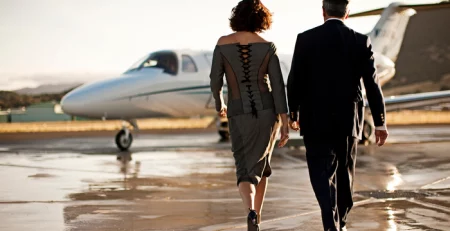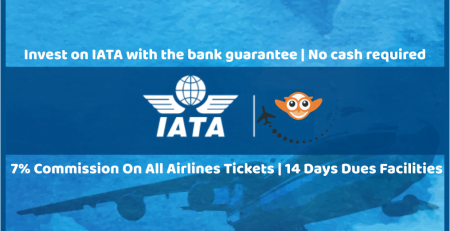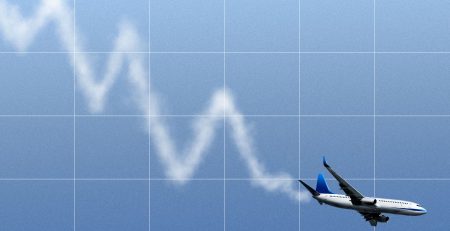Prohibited places to fly aircraft | Prohibited Airspace
There are several locations in the world where aircraft are prohibited from flying or restricted, whether for religious, political, historical or environmental reasons, and they are detailed in a report distributed by the International Civil Aviation Organization.
Australia
- Australia currently has no prohibited airspace. Previously, The Pine Gap Joint Defence Facility near Alice Springs was designated as a permanent no-fly zone. This airspace has since been changed to a restricted area (RA3).
China
- Tiananmen Square
Cuba
- Unscheduled foreign aircraft are prohibited from entering or encroaching Cuban airspace, including disputed international water zones, except when the Cuban Government has explicitly given permission. The Cuban military has been known to shoot down and destroy unauthorised aircraft without warning, including a 1996 incident in which two U.S.-registered aircraft were shot down and destroyed by Cuban Air Force MiGs.
Finland
- Loviisa Nuclear Power Plant, Loviisa
- Olkiluoto Nuclear Power Plant, Eurajoki
- Kilpilahti oil refinery, Porvoo
- Munkkiniemi, Helsinki
- Kruununhaka, Helsinki
- Meilahti, Helsinki
- Luonnonmaa, Naantali
- Hanhikivi Nuclear Power Plant, Pyhäjoki
France
- All traffic is prohibited above Paris. Exceptions include military aircraft and civil aeroplanes flying no lower than 6,500 feet (2,000 m). Authorisations are either given by the Ministry of Defence for military aircraft or by the Paris Police Prefecture and the Directorate General for Civil Aviation for civil ones. Moreover, flying helicopters within the limits of Paris (designated the Boulevard Périphérique) is also forbidden. Special authorisation can be granted by the Prefecture of Police for helicopters undertaking precise missions such as police air surveillance, air ambulances, and transport of high-profile personalities.
- Although not within Paris boundaries, the business district of La Défense has been placed under prohibited airspace in response to 9/11.
Greece
- All traffic is prohibited above the Parthenon below 5,000 feet (1,500 m). This includes aircraft departing from Eleftherios Venizelos International Airport.
Hungary
- Budapest (Inner city and Buda Hills)
- Hungarian Parliament Building, including the heavily protected Holy Crown of Hungary
- Buda Castle, including Sándor Palace (home to the president and his family)
- Hungarian National Bank HQ
- Hungarian National Museum
- Saint Stephen’s Basilica, including the heavily protected Holy Right, the right hand of Saint Stephen (the founder of Hungary)
- Atomic bunker F4
- Research reactor of the MTA Central Physical Research Institute in Buda Hills
- Paks (the area around Paks Nuclear Power Plant)
- Bases of the Hungarian Homeland Defence Forces throughout the country (including Kecskemét Air Base, Pápa Air Base, and Szolnok Air Base)
- National parks and holiday resorts (including Lake Balaton and Hortobágy National Park)
India
- The Rashtrapati Bhavan in Delhi.
- Parliament Building, Prime Minister’s residence, and other important centres in New Delhi.
- The airspace around many Defence and Indian Air Force bases is restricted, although new proposals suggest opening them for civilian aircraft.
- Tirumala Venkateswara Temple in Tirupati state of Andhra Pradesh.
- Padmanabhaswamy Temple in Thiruvananthapuram district state of Kerala.
- The Taj Mahal, Agra, State of Uttar Pradesh, India
- The Tower of Silence, Mumbai.
- Mathura Refinery
- Bhabha Atomic Research Centre
- Sriharikota Space Station in Nellore district state of Andhra Pradesh.
- A 10-km radius no-fly zone over Kalpakkam nuclear installation, Tamil Nadu. All flight activity to 10,000 feet (3,000 m) over the Kalpakkam area is prohibited.
- Golden Temple in Amritsar, Punjab, India
Ireland
- Portlaoise Prison
- Limerick Prison
- Curragh Camp
- Phoenix Park
- Mountjoy Prison
Israel
- Negev Nuclear Research Center
- Sdot Micha Airbase
- Al-Aqsa Mosque
Pakistan
- Islamabad – The no-fly zone is specifically along Constitution Avenue in North-east Islamabad, where many important government buildings are located:
- The Parliament Building
- The Presidency (Residence of the President)
- The Prime Minister’s Residence
- The Prime Minister’s Secretariat
- The Supreme Court
- Kahuta Research Laboratories, Pakistan’s main facility for the development of nuclear weapons
- Khushab Nuclear Complex
Peru
- Machu Picchu
Russia
- The city of Moscow. Many flights are being regularly routed through the outer regions of this airspace.
Since October 25, 2015, Ukrainian aircraft have been prohibited from entering Russian airspace.
Saudi Arabia
- Great Mosque of Mecca (Flying over the Kaaba in Mecca is not banned because of ‘magnetic attraction’ )
Sri Lanka
According to Air Navigation (Air Defence) Regulation 1 (2007), the airspace over the territory and territorial waters of Sri Lanka (except Ruhuna Open Skies Area) are declared an air defence identification zone (ADIZ) with prohibited areas and restricted areas within it. No aircraft may operate in prohibited or restricted areas without valid air defence clearance (ADC) from the Sri Lanka Air Force (SLAF).
Prohibited areas are,
- Colombo City 1 nautical mile (1.9 km) centring the Parliament – Sri Jayawardenapura Kotte
- Sapugaskanda Oil Refinery (0.25 nautical miles, 0.46 km)
- Orugodawatta Petroleum storage tanks. (0.25 nautical miles, 0.46 km)
- Kolonnawa Petroleum storage complex (0.25 nautical miles, 0.46 km)
Restricted areas are,
- Sri Lanka Air Force bases SLAF Anuradhapura, SLAF Hingurakgoda, SLAF Vavuniya, SLAF Palaly and SLAF Sigiriya (5 nautical miles, 9.3 km)
- Jaffna town (5 nautical miles, 9.3 km)
- Trincomalee harbour (5 nautical miles, 9.3 km)
- SLAF China Bay (10 nautical miles, 19 km)
- The garrison town of Diyatalawa (2 nautical miles, 3.7 km)
- Temple of the Tooth, Kandy (2 nautical miles, 3.7 km; earlier 6 nautical miles, 11 km)
Taiwan
- The area around the Presidential Hall (總統府) and Taipei 101, are both in Taipei.
- Parts of the Taiwan Strait
- The area around the nuclear power plants in Taiwan.
Turkey
- İmralı island
Ukraine
Since October 25, 2015, Russian aircraft have been prohibited from all traffic.
United Kingdom
- Sellafield Nuclear Site, Cumbria
- Winfrith nuclear research site
- Atomic Energy Research Establishment Harwell has now been downgraded – see UK CAA
- RNAD Coulport / HMNB Clyde Faslane
- Dounreay Nuclear Power Development Establishment
- Buckingham Palace
- Windsor Castle[16][17]
- Houses of Parliament
- Downing Street
United States
The FAA issues Temporary Flight Restrictions (TFR) in the form of a Notice to Airmen (NOTAM), which are effective for an event, typically a few days or weeks. TFRs are issued for VIP movements such as the president’s travels outside Washington, D.C., surface-based hazards to flight such as toxic gas spills or volcanic eruptions, air shows, military security, and special events, including political ones like national party conventions. TFRs have also been issued to ensure a safe environment for firefighting operations in the case of wildfires and other reasons as necessary. A TFR was quickly issued around Cory Lidle’s aeroplane crash site in New York City. Later, a broader TFR was issued to require pilots travelling over the East River to obtain air traffic control clearance.
Permanent Prohibited Areas
- Thurmont, Maryland, site of Presidential retreat Camp David (Prohibited Area 40 or P-40)
- Amarillo, Texas, Pantex nuclear assembly plant (P-47)
- Bush Ranch near Crawford, Texas (P-49)
- Edwards Air Force Base
- Area 51
- Kennedy Space Center
- Naval Submarine Base Kings Bay, Georgia (P-50)
- Naval Base Kitsap, Washington (P-51)
- Washington, D.C., U.S. Capitol, White House, and Naval Observatory (P-56); see Other restrictions below for information about all Active Prohibited Areas in the Washington D.C./Baltimore Flight Restricted Zone.
- Bush compound near Kennebunkport, Maine (P-67)
- Mount Vernon, Virginia, home of George Washington (P-73)
- Manhattan, New York City
- Boundary Waters Canoe Area Wilderness in northern Minnesota (P-204, 205, and 206)
Temporary restrictions over Disney theme parks were made permanent with language added to a 2003 federal spending bill. Additionally, an indirect TFR prohibits flight below 3,000 feet (910 m) above ground level and within a 3 nautical miles (5.6 km) radius of stadiums with a seating capacity of 30,000 or more, in which an MLB, MLS, NFL, NCAA Division I football, a major motor speedway event, or a WrestleMania is taking place, from one hour before to one hour after the event.
TFAs over public and corporate venues have been controversial. Groups have questioned whether these last TFRs served a public need or the needs of politically connected venue operators.

Other restrictions
In addition to areas off limits to civil aviation, a variety of other airspace restrictions exist in the United States. Notable ones include the Flight Restriction Zone (FRZ), encompassing all airspace up to 18,000 feet (5,500 m) within approximately 15 nautical miles (28 km) of Ronald Reagan National Airport around Washington, D.C. Flights within this airspace, while not entirely prohibited, are highly restricted. All pilots flying within the FRZ are required to undergo a background check and fingerprinting. An additional “Special Flight Rules Area” encompassing most of the Baltimore-Washington D.C. metropolitan area requires filing a flight plan and communication with air traffic control.
Source: Prohibited Airspace and Area












